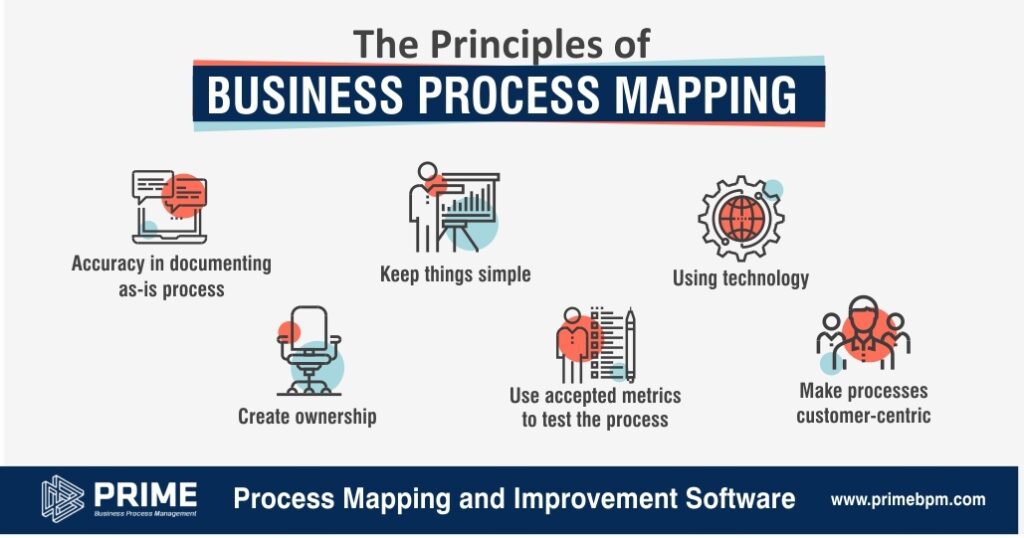Every business needs process maps. They facilitate improvements in the process by helping the organization identify and remove unnecessary tasks in the process areas. Process Maps also improve the decision-making process and enhance the performance of employees. In the previous post, we discussed four principles of creating or redesigning process maps. Here are six more principles of business process mapping that every organization must adhere to:
Accuracy in documenting the as-is process
It is essential to ensure accuracy while documenting the current process situation (as-is process mapping). Unless the current processes are accurately documented, mapping the to-be process (after improvement) will become difficult. Therefore, while documenting the as-is process, it is important to involve everyone who performs the process on a day-to-day basis. An accurately documented as-is process will also help in identifying the problems and weak areas.
Keep things simple
Having a complex process map is as bad as having no process map! Complexity is something that you must avoid while designing a process map, as it would defeat the whole purpose of designing a map. Ideally, the process map should contain only the essence. Correct process map symbols must be used to avoid any confusion. You should strive to make process maps simple, easy, and straightforward so that everyone can understand their roles and responsibilities.
Using technology
Thanks to advanced software and technology, the task of enabling business processes has become easier and simpler. PRIME BPM is an incredibly good cloud–based BPM tool that comes with some phenomenal features designed to help organizations create process maps. Right from highlighting the process that requires immediate attention, to making business process information centrally available to all employees, PRIME BPM helps you at every step from start to finish. Using such tools is a great way to create and implement a business process map in a systematic and structured way.
Use accepted metrics to test the process
When it comes to measuring process performance and making process improvements, the critical role played by process metrics cannot be overlooked. Process metrics are used to collect vital information and make it readily accessible to the management. This makes it easier for the managers to analyse a process and make it more efficient by identifying and removing the bottlenecks that may have been hampering the performance of employees.
Create ownership
Creating a culture of ownership is crucial for the success of an organization. It is important to have a clear-cut ownership structure and a single point of contact so that employees know who to approach and where to go if they need any information. It also goes a long way when it comes to making coordination easier between the team. This in turn will have a positive impact on the productivity and efficiency of employees.
Make processes customer-centric
A positive customer experience is the ultimate indicator of a process’s success. While redesigning a process, it is important to keep the customers (both internal and external) in mind. How will they benefit from it? What can be done to make the process more customer-friendly? Can anything be added or removed to enhance customer satisfaction? These questions must be answered while redesigning a process.
It is essential to keep in mind the principles mentioned above for the successful implementation of a business mapping project.


